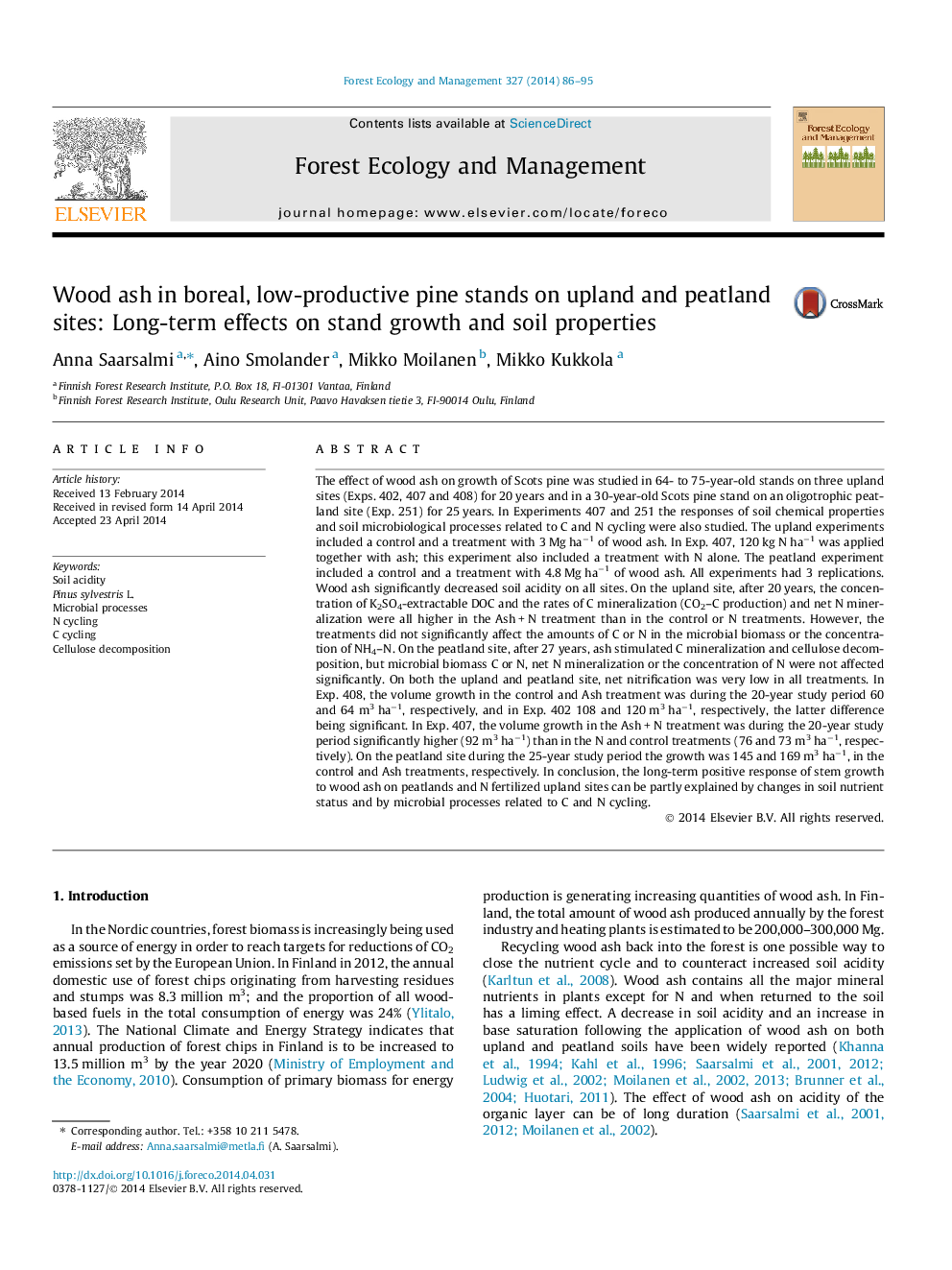| Article ID | Journal | Published Year | Pages | File Type |
|---|---|---|---|---|
| 6543474 | Forest Ecology and Management | 2014 | 10 Pages |
Abstract
The effect of wood ash on growth of Scots pine was studied in 64- to 75-year-old stands on three upland sites (Exps. 402, 407 and 408) for 20 years and in a 30-year-old Scots pine stand on an oligotrophic peatland site (Exp. 251) for 25 years. In Experiments 407 and 251 the responses of soil chemical properties and soil microbiological processes related to C and N cycling were also studied. The upland experiments included a control and a treatment with 3 Mg haâ1 of wood ash. In Exp. 407, 120 kg N haâ1 was applied together with ash; this experiment also included a treatment with N alone. The peatland experiment included a control and a treatment with 4.8 Mg haâ1 of wood ash. All experiments had 3 replications. Wood ash significantly decreased soil acidity on all sites. On the upland site, after 20 years, the concentration of K2SO4-extractable DOC and the rates of C mineralization (CO2-C production) and net N mineralization were all higher in the Ash + N treatment than in the control or N treatments. However, the treatments did not significantly affect the amounts of C or N in the microbial biomass or the concentration of NH4-N. On the peatland site, after 27 years, ash stimulated C mineralization and cellulose decomposition, but microbial biomass C or N, net N mineralization or the concentration of N were not affected significantly. On both the upland and peatland site, net nitrification was very low in all treatments. In Exp. 408, the volume growth in the control and Ash treatment was during the 20-year study period 60 and 64 m3 haâ1, respectively, and in Exp. 402 108 and 120 m3 haâ1, respectively, the latter difference being significant. In Exp. 407, the volume growth in the Ash + N treatment was during the 20-year study period significantly higher (92 m3 haâ1) than in the N and control treatments (76 and 73 m3 haâ1, respectively). On the peatland site during the 25-year study period the growth was 145 and 169 m3 haâ1, in the control and Ash treatments, respectively. In conclusion, the long-term positive response of stem growth to wood ash on peatlands and N fertilized upland sites can be partly explained by changes in soil nutrient status and by microbial processes related to C and N cycling.
Keywords
Related Topics
Life Sciences
Agricultural and Biological Sciences
Ecology, Evolution, Behavior and Systematics
Authors
Anna Saarsalmi, Aino Smolander, Mikko Moilanen, Mikko Kukkola,
